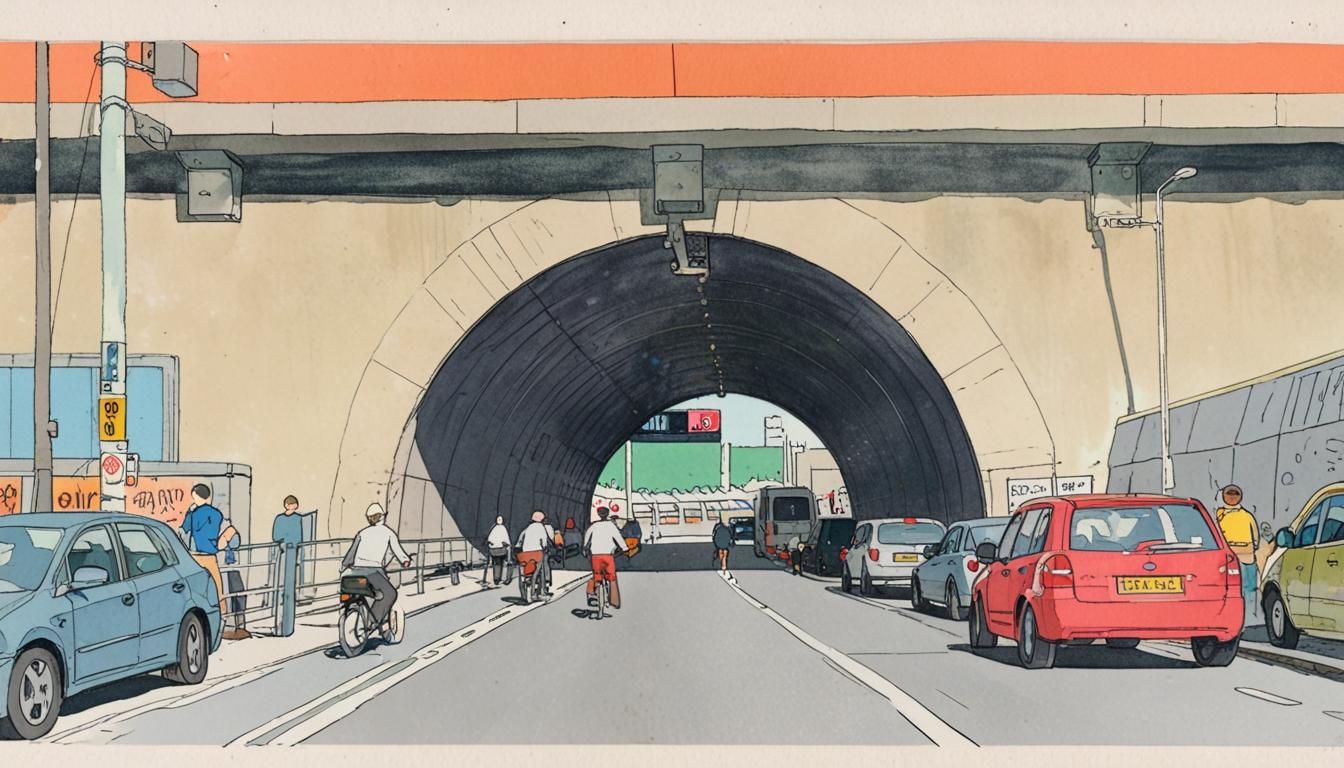The Silvertown tunnel, a newly constructed multibillion-pound road tunnel beneath the River Thames, is set to officially open for vehicles on Monday. This infrastructure project connects Greenwich on the south bank to Newham on the north side and is touted by London Mayor Sadiq Khan and Transport for London (TfL) as a vital enhancement to the city’s transport network. They assert that the tunnel will alleviate congestion and improve air quality, providing a more efficient cross-river transport solution for London’s burgeoning population.
Despite the claims of local officials, opposition to the scheme has been strong, with considerable pushback from a coalition of local residents, environmental activists, climate professionals, and medical advocates. Critics argue that the tunnel will lead to increased traffic and exacerbated air pollution, particularly impacting health in some of London’s most underprivileged areas. Victoria Rance, the founder of the Stop the Silvertown Tunnel Coalition, expressed widespread frustration among locals who contest the tunnel's necessity. She characterised the project as a relic of outdated transportation solutions, saying, “As cities across Europe invest in public transport or active travel – real green transport infrastructure – we are left with what is effectively 1970s technology … a highly polluting road tunnel that will be out of date the moment it opens.”
Rance further labelled the £2 billion investment a misallocated opportunity, threatening the wellbeing of local communities for the foreseeable future unless the approach is re-evaluated. She suggested that the tunnel could potentially be repurposed for public transportation and cycling, similarly to other historical Thames crossings that were adapted over time.
In his defence of the tunnel, Khan outlined anticipated benefits, citing improvements in travel speed and reliability for residents of south and east London. He added that measures such as toll discounts for local residents and dedicated lanes for zero-emission buses, along with a free cycle-shuttle service, have been designed to promote cleaner transport options.
The tunnel itself spans 1.4 kilometres (approximately 0.9 miles), and the fee for car users will be up to £4 per journey. However, critics underscore that the bus lane will also accommodate heavy goods vehicles (HGVs), potentially increasing the number of large trucks on the roads, particularly those unable to access the Blackwall tunnel. Furthermore, there will be no tolls for lorries or any vehicle passing through between 10pm and 6am.
Caroline Russell, a Green Party member of the London Assembly, has been a vocal detractor of the tunnel, stating that its inauguration reflects “the £2 billion wasted on a project that nobody in London has shown any real enthusiasm for.” Russell insisted that the focus should be on river crossings that prioritise clean air and safe travel options rather than expanding road infrastructure that is expected to increase traffic.
Russell also critiqued the shuttle service for cyclists, labelling it “a half-baked impractical solution strapped on to” the road tunnel. She expressed doubt regarding the feasibility of expecting cyclists to dismount, wait for a shuttle bus, and then transport their bicycles, especially in an area characterised by hazardous cycling conditions and difficult junctions.
As the opening of the Silvertown tunnel approaches, the discourse surrounding it continues to highlight a deep divide between proponents of the project and those who foresee its potential negative consequences on London’s urban environment and public health.
Source: Noah Wire Services
